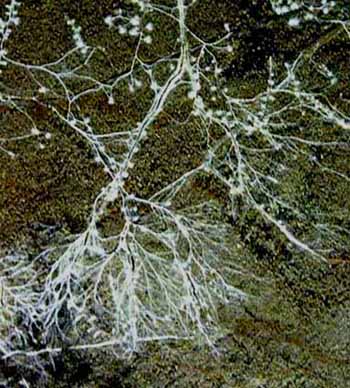

Phoebe Bogert and Amy Lindemuth - Spring 2005 |
||
| Introduction | ||
Consideration of a site and its selection is often based on the structure or inorganic qualities of the existing soils, but this type of analysis does not tell the whole story. The organic and biotic lives of the soil are equally important soil traits and greatly define plant health. Mycorrhizal symbioses between fungi and the roots of many plant species are a major part of soil life and can characterize the health of an ecosystem through healthy plant communities and soil structure.
Maintenance or reintroduction of these mycorrhizal associations to undisturbed and disturbed sites can play a major role in both the approach to construction in site preparation during construction and in post-construction results. As we strive towards sustainable construction solutions, as addressed in the concepts of Low Impact Development, we find that the process can be as critical as the result. Understanding soils and their value is essential to a successful product. For example, though stockpiling soils has long been a common practice in construction – there are potential benefits to the soil life that should be considered. If stored correctly, existing soil life can be retained, benefiting the project in short-term construction costs and through more successful plant establishment in the long term. Mycorhizal associations differ from plant family to plant family, yet in general the majority of plant species and plant communities benefit from them and should be considered in site construction. |
||
